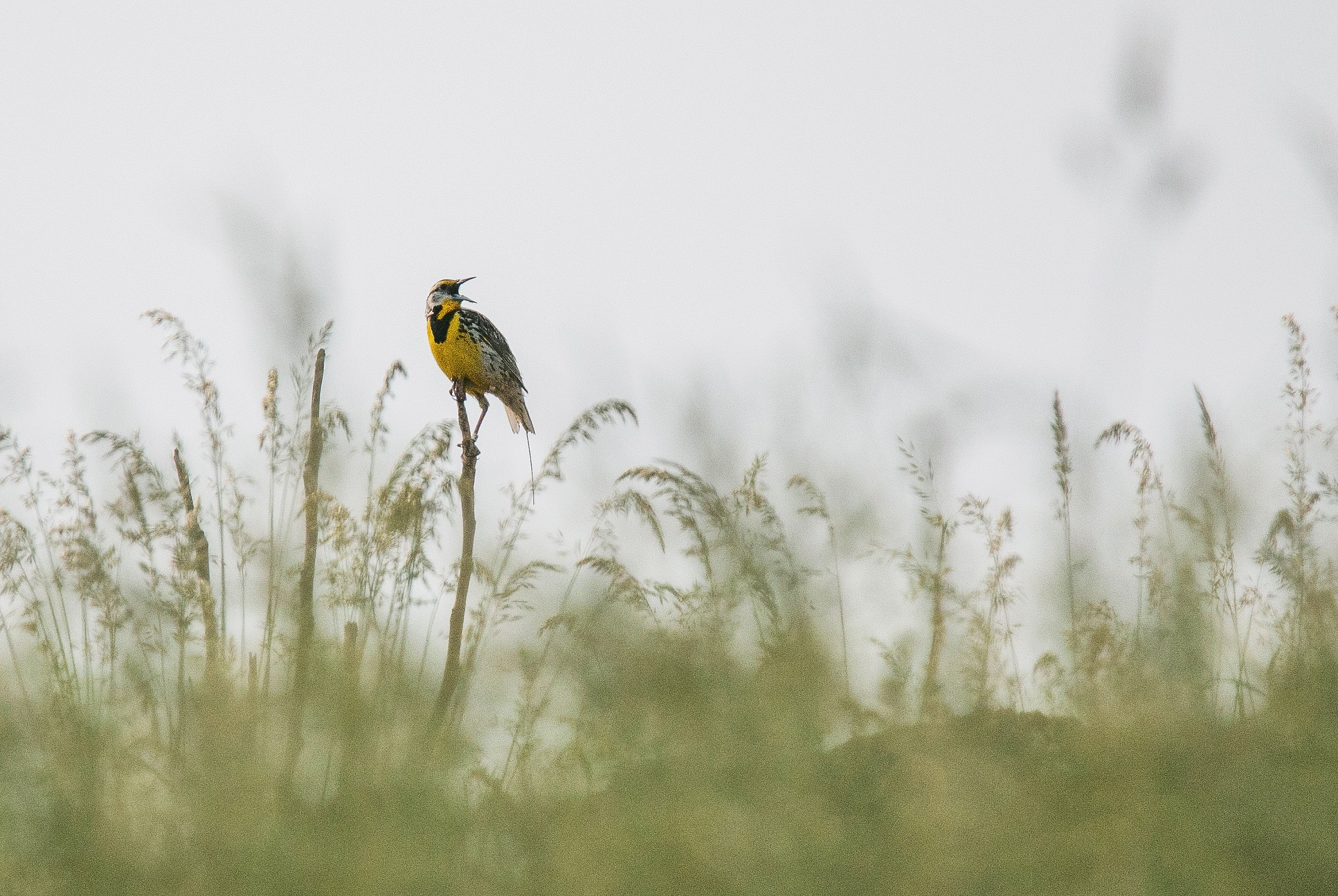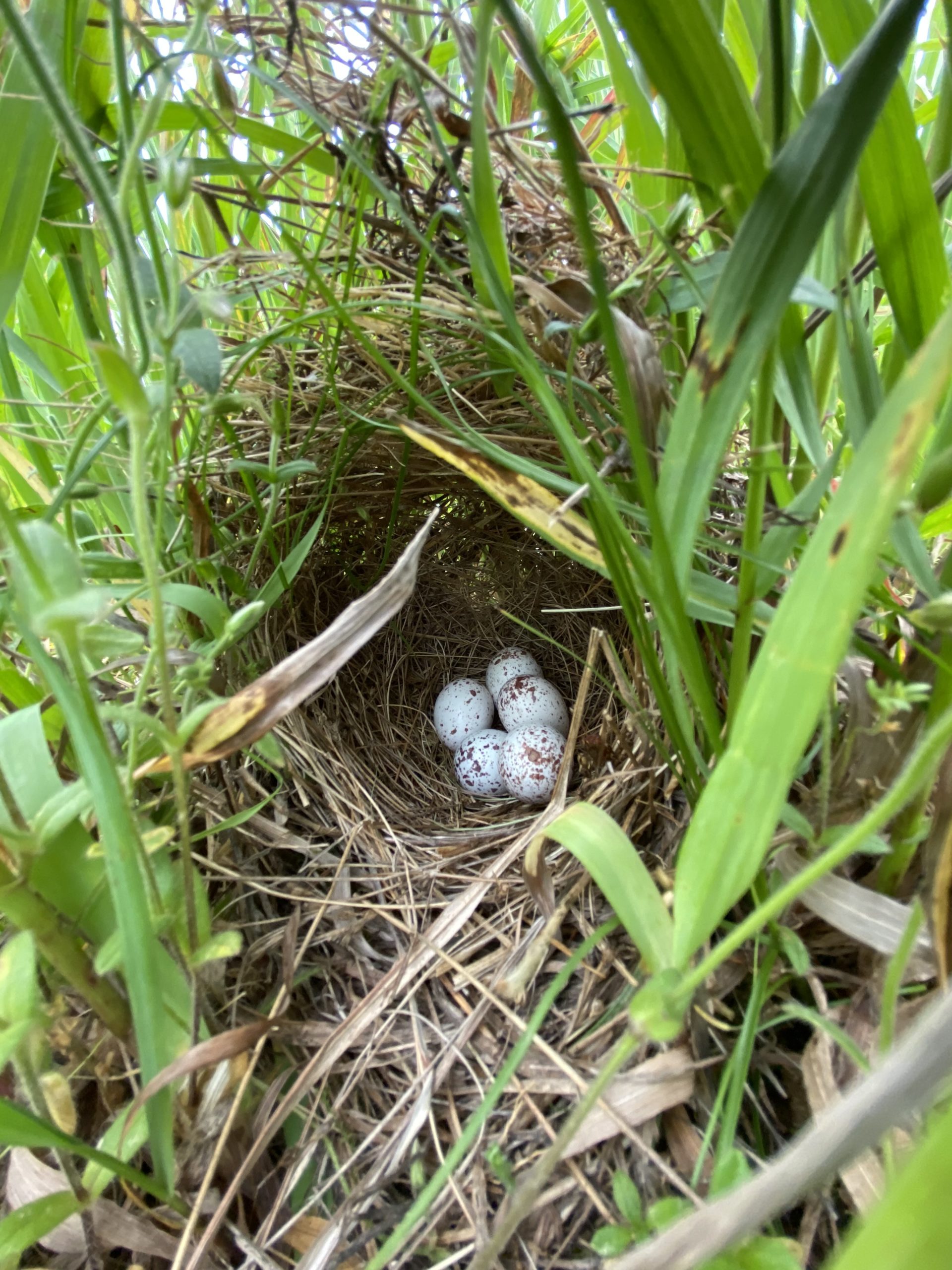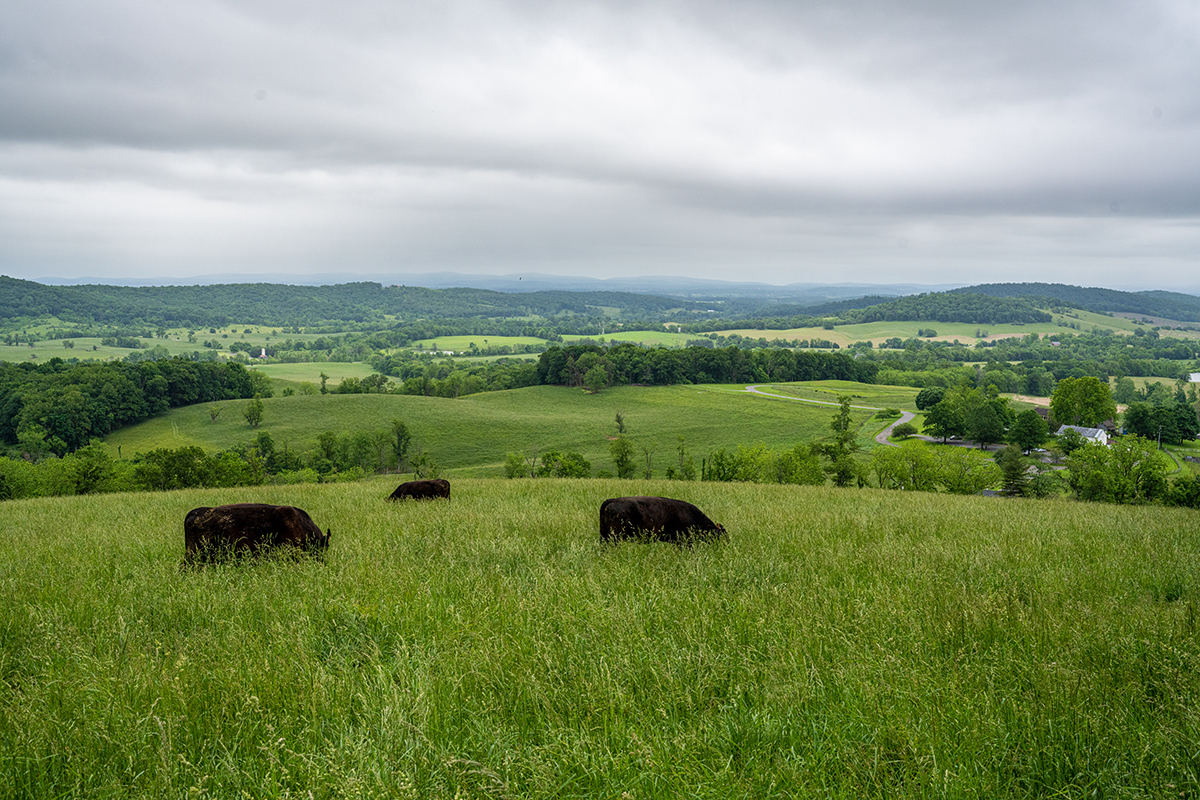Once upon a time, Virginia’s scenic countryside was enriched by a vibrant chorus of birdsong, including those of our iconic grassland birds like the eastern meadowlark, often seen serenading from atop fence posts, and the bobolink, affectionately referred to as the “R2D2 bird” for its bubbly and robotic-sounding song. The cryptic grasshopper sparrow often goes unnoticed, with its insect-like buzz and camouflaged plumage, while the red-winged blackbird belts out songs from a high perch, showing off bright shoulder patches. In the spring, the symphony of our grassland birds is accompanied by a frenzy of courtship and nest-building activity amidst the growing grasses of meadows and fields.

But sadly, many of our grassland birds, along with their songs, are in sharp decline as native grasslands in Virginia and throughout the United States have been steadily converted to agricultural lands over the last century. In fact, modern agricultural machinery, widespread use of biocides, and increased consumer demands have inflicted more intense human impacts on grasslands than on any other North American terrestrial ecosystem. Eastern meadowlarks have lost more than 75 percent of their population since the 1970s and rely upon private lands for virtually all of their remaining habitat in this country.
Now, the new Virginia (formerly Piedmont) Grassland Bird Initiative (VGBI), a partner initiative of The Piedmont Environmental Council and Smithsonian’s Virginia Working Landscapes begun in 2021, is showing promising signs of returning those birds to the Virginia landscape. With grant funding, the program pays farmers to adopt bird-friendly best management practices—specifically, delayed spring haying and summer pasture stockpiling. In its first year, 10 property owners enrolled over 1,800 acres. Already, landowners, land managers and farm employees alike have noticed a difference.
“I’ve been hearing more bobwhites than ever before,” said Patty Lane, an employee of Eldon Farms in Rappahannock County. “This incentive program has reached much further than the fields we enrolled. I hope better habits and understanding are occurring and that this will continue in future years.”
After hearing about the simple ways to support grassland birds, several other landowners reached out to VGBI partners to share the exciting news that they were beginning to implement best management practices on their own, even without the financial incentive.
Delayed Haying and Summer Stockpiling
Delayed spring haying involves postponing the first cutting of hay until early- or mid-July, which allows the bulk of grassland birds to successfully raise at least one clutch of young. This practice can also benefit producers by spreading out labor requirements and producing higher-fiber mature hay, which is suitable for feeding dry cows, horses and retired animals. It can enhance these economic benefits by allowing producers to market farm products as “bird-friendly” and to maintain their eligibility for lower taxes through the state’s Land Use Valuation program.

For Fritz Reuter at Little Milan in Fauquier County, delayed haying offers an ecological benefit as well. “We produce hay for mulch, which allows us to slowly move the needle toward restoring at least some of the native flora of our hay fields. Delayed cutting correlates nicely with the timing of when our native warm season grasses are most active—in the heat of the summer—and can outcompete dormant vegetation like fescue and orchardgrass,” he said.
Summer pasture stockpiling involves removing cattle from select pastures during the spring and summer months, which not only nets the ideal grass height for nesting birds, but also results in better soil health and improved forage availability in late summer.
“Many of the grazing practices that are beneficial for grassland birds, also have positive impacts on livestock performance and profitability for livestock operations,” said Jacob Gilley, owner of Heaven’s Hollow Farm in Orange County and sustainable grazing coordinator for American Farmland Trust. “Extended grazing seasons with less reliance on harvested feeds like hay reduces cost for producers on inputs like fuel, fertilizer, equipment repair and time,” Gilley said.
A Win-Win for Farmers and for Birds
The two simple strategies are beneficial not only for grassland birds, but for farmers as well. “Although at times they seem at odds, livestock agriculture and wildlife conservation can benefit one another,” said Tim Mize at Virginia Cooperative Extension. “By delaying grazing or haying on some of our pasture land, farmers can be partners in the continued survival and sustainability of our grassland bird populations, while at the same time lowering their production costs. It just seems obvious to me that this is a win/win scenario for both,” he said.
Sam Grant, who leases pastures at Francis Mill Farm in Loudoun County and participated in the summer pasture stockpiling program, concurs. “The best part of Virginia Grassland Bird Initiative participation was how little impact it had on my normal grazing schedule. I delayed grazing the field until mid-July with no negative impact, and the morning visits from the birders were discreet and pleasant.”

With renewed funding from the Cornell Land Trust Bird Conservation Initiative, the Virginia Piedmont Grassland Bird Initiative plans to expand in 2023. It will add five counties in the Shenandoah Valley — Augusta, Frederick, Page, Rockingham and Shenandoah (hence the name change) — and bring on new Valley-based partners, including the Shenandoah Valley Conservation Collaborative.
“Working with PEC and Virginia Working Landscapes will bring new expertise and perspective to our partnership, and the Virginia Grassland Bird Initiative will provide a new avenue for Valley farmers to improve both the grazing and grassland bird habitat on their property,” said the collaborative’s project manager, Kevin Tate.
As the seasons transition toward fall, some of our grassland bird species are fueling up to migrate to their wintering grounds, and as some species depart, others will arrive, marking the return of Virginia’s overwintering grassland bird species. As you drive past local farms in the coming months keep your eyes peeled for life within the grasslands, including the moth-like flight of short-eared owls, the distinctive white rump patch of northern harriers gliding low over fields, and songbirds like horned larks foraging on the bare ground beneath the standing vegetation.
Applications for enrollment in the VGBI incentives program will be accepted later this year. For more information about the Virginia Grassland Bird Initiative, visit vagrasslandbirds.org.
This story appeared in The Piedmont Environmental Council’s member newsletter, The Piedmont View. If you’d like to become a PEC member or renew your membership, please visit pecva.org/join.
